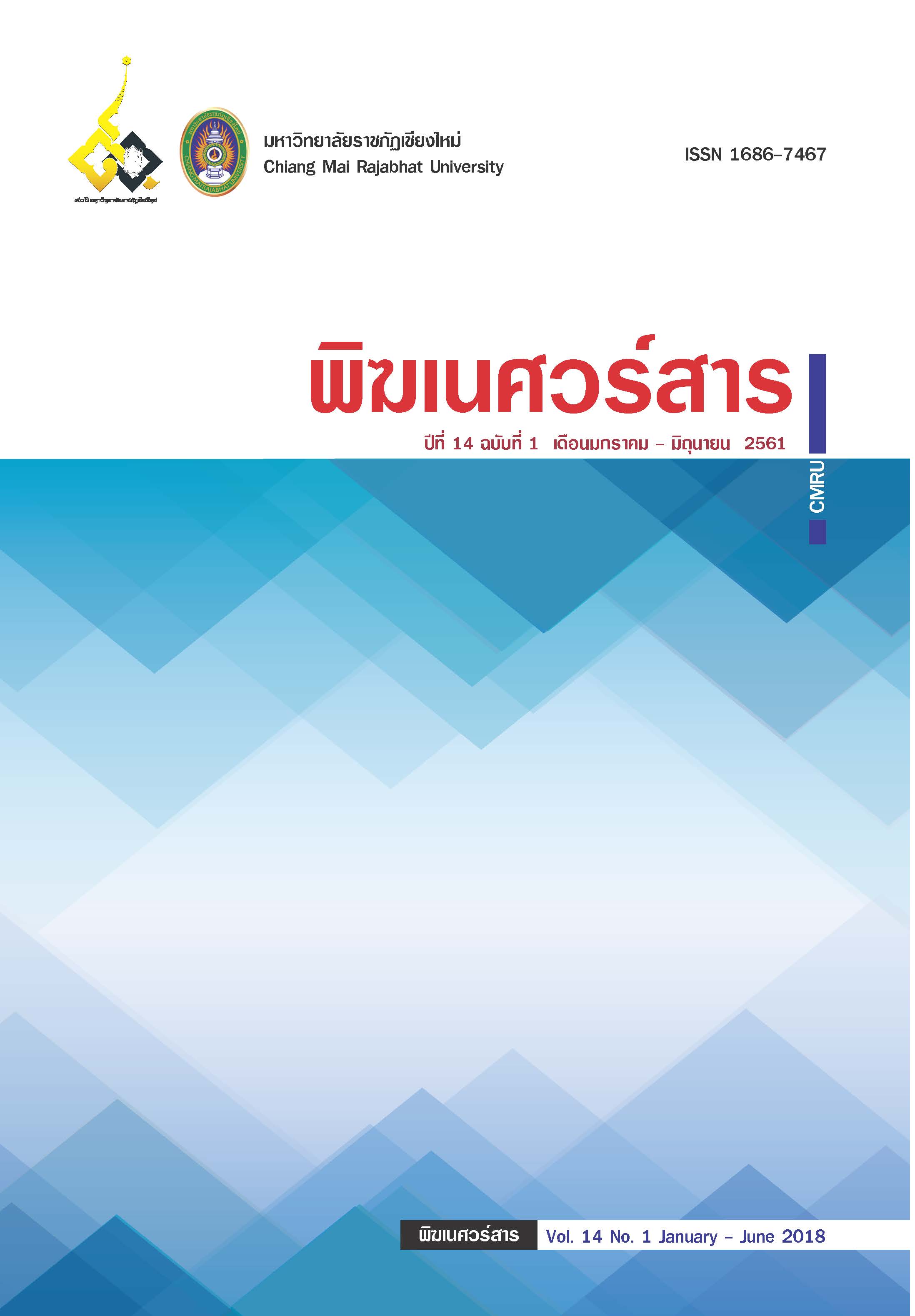Health Seeking Behaviors and Access to Health Services of Shan Migrant Workers in Hang Dong District, Chiang Mai Province
Main Article Content
Abstract
The objectives of this descriptive study were to describe the health seeking behaviours and access to health services of Shan immigrant workers in sub–district of San Phak Wan, Hang Dong District, Chiang Mai Province. Data was collected by a questionnaire in March, 2017. Percentage, mean and Chi-square were used to determine the association between personal characteristics and barriers to health service access.
The results found that the majority of the sample were male 61.9 % and aged between 30-39 years 38.1%. Most of them came from various cities in Shan state with unspecified origins of birth. Buddhism 44.8% denominated as their religion, and 89.5% did not attend formal schooling. 65.7% were married and had a household member of 3-4 persons. 43.1% had been working in Thailand for 3-4 years at the time of data collection. 49.7% held a working visa. 84.4% were registered with the labour department. 84.4% worked as construction workers. 60.8% regularly bought medicines from local pharmacists. The more reported barrier to health service access was long waiting queue. While personal factor had no relationship to access to health services.
Downloads
Article Details
The articles published are copyrighted by the Graduate School, Chiang Mai Rajabhat University.
The opinions expressed in each article of this academic journal are solely those of the individual authors and do not reflect the views of Chiang Mai Rajabhat University or its faculty members. The responsibility for the content of each article rests entirely with the respective authors. In the event of any errors, the authors alone are responsible for their own articles.
References
Archavanitkul, K. (2007). The Thai State and Changes in AIDS and Reproductive Health Policies for Undocumented Migrants. NakhonPathom, Thailand: Institute for Population and Social Research, Mahidol University.
Aung, T., Pongpanich, S., and Robson, M. G. (2009) Health seeking behaviors among Myanmar migrant workers in Ranong Province, Thailand. J Health Res 23 Suppl, 5–9.
Choy et al. (2011). Reporting of Occupational Diseases in Singapore. The Singapore Family Physician, 37(2).
Del Amo, J., Likatavičius, G., Pérez-Cachafeiro, S., Hernando, V., González, C., Jarrín, I. … Bolúmar, F. (2011). The epidemiology of HIV and AIDS reports in migrants in the 27 European Union countries, Norway and Iceland: 1999-2006. Eur J Public Health, 21(5), 620-6. doi: 10.1093/eurpub/ckq150. Epub 2010 Nov 4.
Hu, X., Cook, S. and Salazar, M. A. (2008). Internal migration and health in China. The Lancet, 372(9651), 1717–1719.
International Labour Organization. (2015). New ILO figures show 150 million migrants in the global workforce. Retrived from http://www.ilo.org/global/topics/labour-migration/newstatements/WCMS_436140/lang--en/index.html
Isarabhakdi, P. (2004). Meeting at the Crossroads: Myanmar Migrants and Their Use of Thai Health Care Services. Asia Pac Migr J, 13(1), 107-126.
Kanchanajittra, C., Podhisita, C., Archavanitkul, K., Pattaravanich, U., Siriratmongkon, K., and Seangdung, H. (2007). Thai health 2007. NakornPathom: Institute of Population and
Social Research, Mahidol University.
Krejcie, R. V. and Morgan, D. W. (1970). Determining Sample Size for Research Activities. Educational and Psychological Measurement, 30(3), 607-610.
Lee, W., Neo, A., Tan, S., Cook, A. R., Wong, M. L., Tan, J., ... and Mark, I. (2014). Health-seeking behaviour of male foreign migrant workers living in a dormitory in Singapore. BMC health services research, 14(1), 300.
Li, X., Stanton, B., Fang, X., Xiong, Q., Yu, S., Lin, D., and Wang, B. (2009). Mental health symptoms among rural-to-urban migrants in China: A comparison with their urban and rural counterparts. World Health and Population, 11(1), 24–38.
Pearson, E., Punpuing, S., Jampaklay, A., Kittisuksathit, S., and Prohmmo, A. (2006). The Mekong challenge: Underpaid, overworked and overlooked: The realities of young migrant workers in Thailand. International Programme on the Elimination of Child Labor, International Labor Organization.
Peng, Y., Chang, W., Zhou, H., Hu, H., & Liang, W. (2010). Factors associated with health-seeking behavior among migrant workers in Beijing, China. BMC health services research, 10(1), 69.
Price, N. (2001). The performance of social marketing in reaching the poor and vulnerable in AIDS control programs. Health Policy and Planning, 16(3), 231-239.
Runganga, A., Sundby, J. and Aggleton P. (2001) Culture, Identity and Reproductive Failure in Zimbabwe. Sexualities, 4(3), 294-315.
Srithamrongsawat, S., Wisessang, R., and Ratjaroenkhajorn, S. (2009). Financing healthcare for migrants: a case study from Thailand. International Organization for Migration.
Steen, T. and Mazonde, G. (1999). Ngaka ya setswana, Health seeking behaviour in Batswana with pulmonary tuberculosis. Social Science & Medicine, 48(2), pp.163-172.
Suwanvanichkij, V. (2008). Displacement and disease: The Shan exodus and infectious disease implications for Thailand. Conflict and Health, 2(1), 4.
Song, W.Y. (2006). Research on Health Status of Female Migrant Workers and Relevant Factors. (Master’s Thesis, Suzhou U)
Li, S., Huang, H., Cai, Y., Xu, G., Huang, F., and Shen, X. (2009) Characteristics and determinants of sexual behavior among adolescents of migrant workers in Shanghai (China). BMC Public Health, 9, 194-204
Thomas, J. J. and Borrayo, E. A. (2014). The combined influence of psychosocial factors on illness behavior among women. Women Health, 54(6), 530-51. doi:10.1080/03630242.2014.903886.
United Nations, Department of Economic and Social Affairs, Population Division (2016). International Migration Report 2015 (ST/ESA/SER.A/384). United Nations.
WHO Thailand and Department of Disease Control. (2005). Ministry of Public Health: Overview of Thai-Myanmar Border Health Situation. Retrieved from http://w3.whothai.org/EN/Section3/Section39.html
World Health Organization. (2001). A human rights approach to tuberculosis. Geneva, Switzerland: World Health organization, 12-13.


